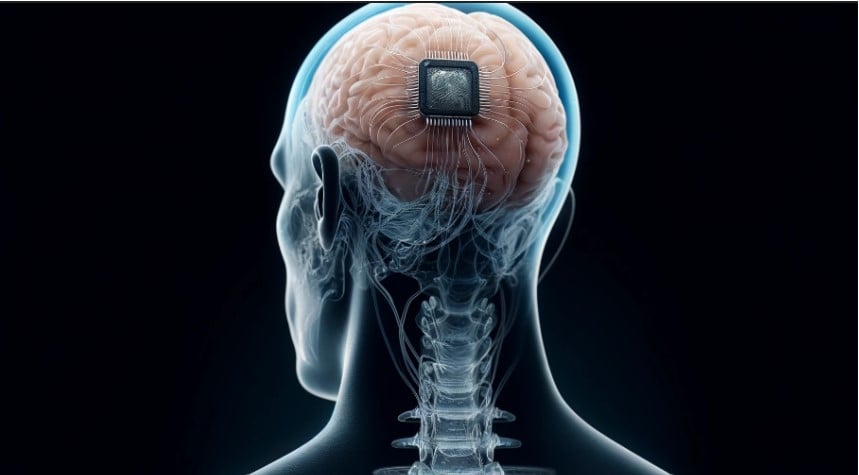
Neuralink Says First Brain Chip Implant Encountered Mechanical Problem
In a blog post released on May 8th, Elon Musk’s neurotechnology startup, Neuralink, revealed an issue with its brain chip implant and detailed the solution they used to fix it. In March, the first-ever Neuralink chip patient was shown to be able to control a computer mouse with his mind, despite this problem occurring in late February.
The announcement reveals that several threads of the brain implant had retracted from Noland Arbaugh’s brain, the 29-year-old quadriplegic participant. The problem led to a decrease in the amount of data that was retrieved during research and testing.
The retracted threads also resulted in reduced bits-per-second (BPS), which is used to measure the speed and accuracy with which a patient can control a computer cursor. A higher BPS score means better cursor control.
Neuralink did not disclose the cause or how many threads retracted, nor did it mention any safety concerns for Arbaugh. Adjusting an algorithm to be “more sensitive to neural population signals” improved the BPS rates, according to the announcement.
Despite the setback, Neuralink still managed to host a live demonstration of Arbaugh playing online chess on X in March. In another video on X, he was shown using the implant to play the racing video game Mario Kart using a Nintendo Switch.
Individuals within Neuralink expressed optimism about resolving these early-stage issues, according to the Wall Street Journal, which first reported the story. The problem was also reported to the US Food and Drug Administration (FDA) — which regulates clinical trials and approves commercialization of any medical device or technology.
Neuralink’s N1 device, which is surgically implanted in the brain by the company’s proprietary surgical robot, aims to record and decode neuronal activity. The company’s aim is to grant digital autonomy to individuals coping with spinal cord injuries. But future plans involve extending its “Link’s functionality to the physical world to enable control of robotic arms, wheelchairs, and other technologies.”
In the months to come, the company is hoping to carry out two more implants, with a total of 10 planned for this year, according to the Wall Street Journal.

 Previous Story
Previous Story

 Latest articles
Latest articles 

Leave a Comment
Cancel